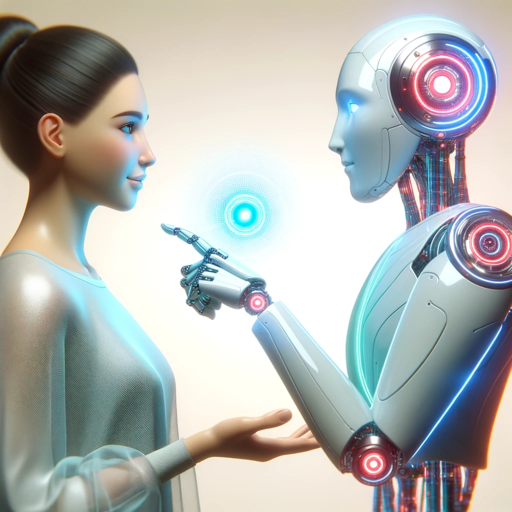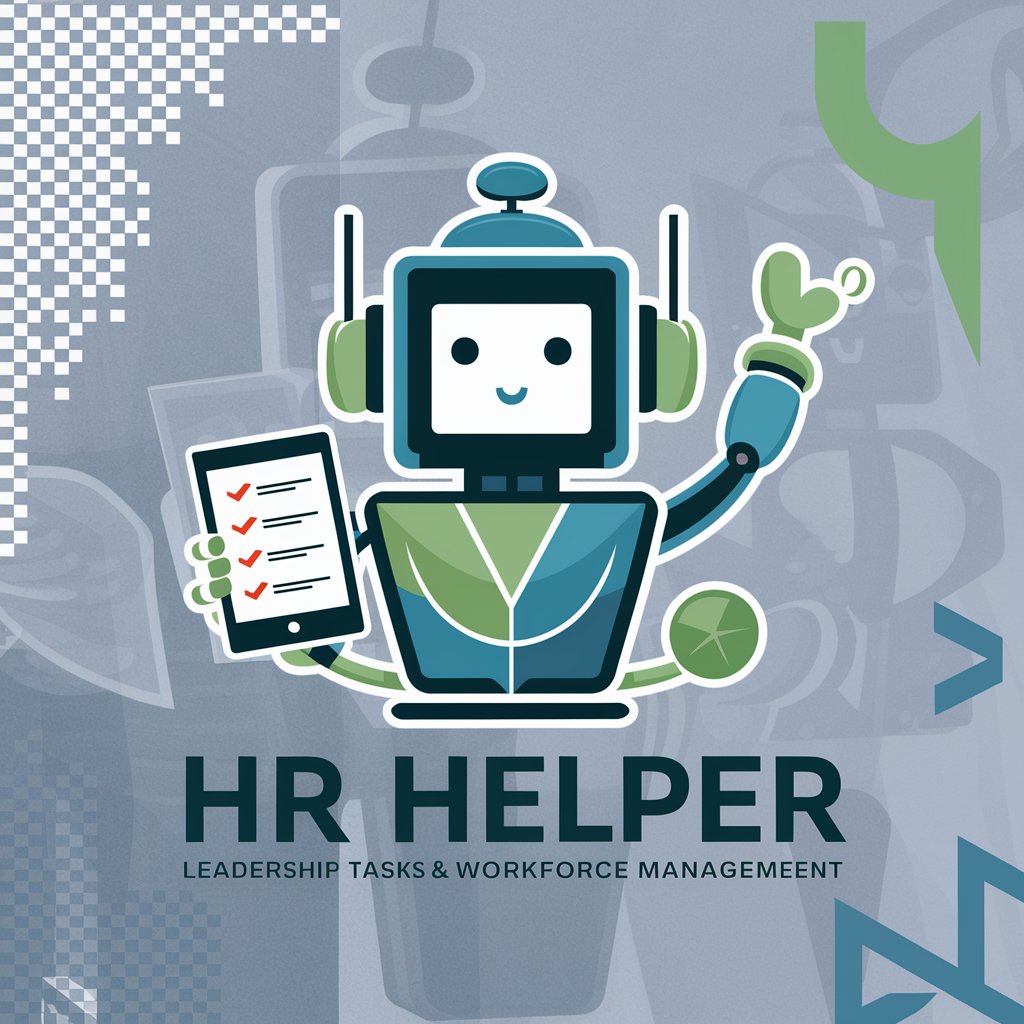
HRI - Trial, No Signup Needed

Hi! Let's explore the world of human-robot interaction.
Empowering Collaboration with AI-driven Robots
What are the benefits of human-robot collaboration?
Can you explain the challenges in human-robot interaction?
How is AI used in robots interacting with humans?
What should I consider when designing a human-robot interface?
Does Human Robot Interaction influence the organization strategy and if so, in what way?
Get Embed Code
Introduction to Human-Robot Interaction (HRI)
Human-Robot Interaction (HRI) is a field of study dedicated to understanding, designing, and evaluating robotic systems for use by or with humans. It's an interdisciplinary area at the intersection of robotics, artificial intelligence, psychology, sociology, and design, aiming to develop robots that can work alongside humans effectively and safely. HRI considers aspects such as the robot's physical design, its communication methods (both verbal and non-verbal), and how it learns and adapts to human behaviors. A classic example of HRI in action is a collaborative robot (cobot) working with humans on a manufacturing assembly line, where the robot's design is optimized for safe interaction and mutual understanding to enhance productivity and reduce human strain. Powered by ChatGPT-4o。

Main Functions of HRI
Assistance
Example
Robotic arms in healthcare
Scenario
In surgical procedures, robotic arms assist doctors by providing precision and stability that surpass human capabilities, enhancing surgical outcomes.
Collaboration
Example
Cobots in manufacturing
Scenario
Cobots work alongside human workers on assembly lines, taking over repetitive, physically demanding tasks, which allows humans to focus on more complex, strategic activities.
Companionship
Example
Social robots in eldercare
Scenario
Social robots engage with elderly individuals, providing companionship, assisting with daily routines, and alerting medical personnel in emergencies, thereby improving the quality of life and independence.
Education and Training
Example
Educational robots
Scenario
Robots are used in classrooms to provide interactive learning experiences, teaching programming, math, and science concepts in an engaging way that adapts to the student's pace and learning style.
Exploration and Surveillance
Example
Drones for disaster management
Scenario
Drones are deployed in disaster-stricken areas to assess damage, locate survivors, and map safe routes for rescuers, significantly improving response times and situational awareness.
Ideal Users of HRI Services
Healthcare Professionals
Surgeons, nurses, and therapists who can leverage robotic systems for precision in surgeries, rehabilitation, and patient care, improving outcomes and efficiency.
Manufacturing and Logistics Workers
Workers in industries that require precision, efficiency, and safety benefit from cobots that take over repetitive or dangerous tasks, enhancing productivity and workplace safety.
Elderly and Caregivers
Elderly individuals who need assistance in daily activities and social interaction, and their caregivers who seek support in providing care, can benefit from companion robots.
Educators and Students
Teachers looking to introduce innovative teaching methods and students engaging in STEM education benefit from educational robots that make learning more interactive and adaptable.
Emergency Responders
Firefighters, police, and disaster relief teams can utilize drones and ground robots for surveillance, risk assessment, and search and rescue operations in environments too dangerous for humans.

Guidelines for Utilizing Human-Robot Interaction (HRI)
Start with YesChat.ai
Begin by exploring YesChat.ai for a complimentary trial, accessible without signing up or the necessity for a ChatGPT Plus subscription.
Identify Your Needs
Determine the specific HRI application you are interested in, whether for research, education, industry automation, or personal use, to tailor the experience.
Customize the Interaction
Configure the interaction parameters based on your needs, such as setting up the robot's language, behavior, and response style for optimal engagement.
Engage and Iterate
Interact with the AI or robot, providing feedback and adjusting parameters as needed to refine the interaction quality and outcome.
Review and Analyze
After the interaction, review the data and feedback to analyze the effectiveness and identify areas for improvement or further exploration.
Try other advanced and practical GPTs
Influencer Partnership Strategy
Maximize your brand's impact with AI-driven influencer partnerships.

DePусьGPT
Master German and Russian with AI

Diseñador UI/UX
Transforming Design into Code, AI-Powered

Quran Search Assistant
Explore the Quran with AI-powered insights

VAB-PT
Empowering parents with AI-driven guidance and support

Oráculo de HiveAgile
Empowering Businesses with AI-Driven Open-Source Solutions

Story Weaver
Crafting Magical Stories for Kids

Watch Seller Listing Sales Maximizer
Maximize Your Watch Sales with AI

Unit Test Boss
Automating Dynamics 365 Testing with AI

Bottle Spinner Game GPT
Spin the bottle, let AI decide!

Pregnancy & Newborn Care
Empowering your parenting journey with AI.

Content Helpfulness and Quality SEO Analyzer
Elevate Content with AI-Powered SEO Insights

FAQs on Human-Robot Interaction (HRI)
What is Human-Robot Interaction (HRI)?
HRI is a field of study focused on the design, implementation, and analysis of robots intended to interact with humans. This interdisciplinary field combines elements from robotics, artificial intelligence, psychology, and social sciences to create robots that can work alongside or assist humans effectively.
How can HRI improve productivity in workplaces?
HRI can enhance productivity by automating routine tasks, providing support in complex operations, and ensuring safety in hazardous environments. This frees up human workers to focus on tasks requiring creativity and critical thinking, thus improving overall efficiency and job satisfaction.
What are the ethical considerations in HRI?
Ethical considerations include ensuring privacy, security, and safety of human users, addressing employment impacts, and developing transparent, fair, and accountable AI systems. It also involves considering the emotional and social impact of robots on human lives.
How does HRI adapt to different users or environments?
HRI systems use machine learning and artificial intelligence to adapt to user behaviors, preferences, and feedback. They can also adjust to different environmental conditions through sensors and real-time data analysis, ensuring optimal interaction across diverse settings.
What are the future trends in HRI?
Future trends include the development of more empathetic and emotionally intelligent robots, increased autonomy, improved human-robot collaboration in workplaces, and the expansion of HRI applications in healthcare, education, and public services.





